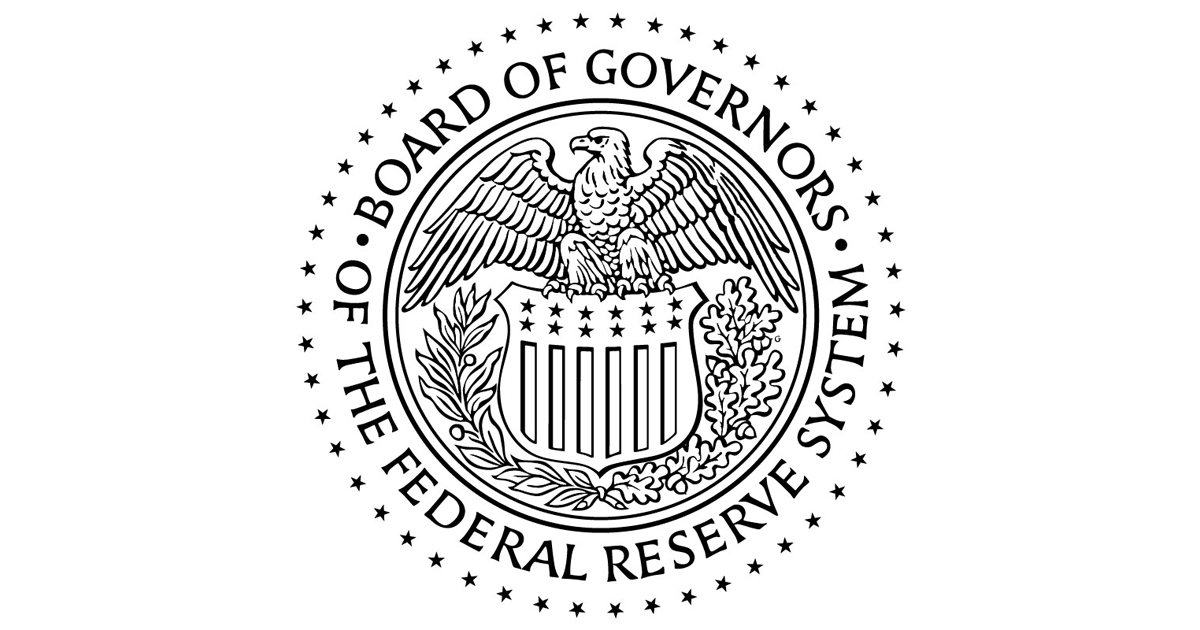A new research paper was published in Volume 17, Issue 9 of Aging-US on August 30, 2025, titled, “Glycocalyx-targeted therapy prevents age-related muscle loss and declines in maximal exercise capacity.”
In this study, led by…

A new research paper was published in Volume 17, Issue 9 of Aging-US on August 30, 2025, titled, “Glycocalyx-targeted therapy prevents age-related muscle loss and declines in maximal exercise capacity.”
In this study, led by…

Mark SimpsonCommunities correspondent, BBC News NI
 Chris Jackson/PA Wire
Chris Jackson/PA WireThe Prince and Princess of Wales have met recently-qualified…
Paris, France (14 October 2025) – EssilorLuxottica announced today the launch of SWITCH: Vision Innovation Summit by EssilorLuxottica, a new industry wide event that will explore the driving forces behind the industry’s rapid transformation. SWITCH will provide a captivating 3-day experience for eyecare professionals that will spark meaningful conversation around everything from AI wearables to med-tech to myopia innovation, capturing the true potential beyond frames and lenses to shape the future of vision care.
The new event will be held March 9-11, 2026 in Orlando for partners from the Americas, leading immediately into Vision Expo, and in Monte-Carlo on April 13-15, 2026 for customers in EMEA and Asia, allowing the Company to present a global and unified vision for the future.
As EssilorLuxottica continues to push the boundaries of patient care through advanced vision care, AI eyewear and med-tech solutions, SWITCH will be an ideal platform for provocative dialogue among industry professionals around advancements in areas such as AI and data science.
“The world we play and practice in tomorrow will be more predictive, more personalized, more powerful through AI, data and other developments, and it’s essential that eyecare professionals are in the driver’s seat. In creating SWITCH, we will provide an ideal environment for the kind of elevated conversation, discovery and relationships needed to succeed in a much more connected world. We look forward to delivering an experience that truly reflects the inspiring times we’re living in,” said Francesco Milleri, Chairman and CEO, and Paul du Saillant, Deputy CEO at EssilorLuxottica.
More details on the event will be shared in the coming weeks and months. For customers in the Americas, please visit the following link for more information and to register to the event: CLICK HERE
DOWNLOAD THE PRESS RELEASE
This request seems a bit unusual, so we need to confirm that you’re human. Please press and hold the button until it turns completely green. Thank you for your cooperation!
This request seems a bit unusual, so we need to confirm that you’re human. Please press and hold the button until it turns completely green. Thank you for your cooperation!


EXCLUSIVE: Shadowhunters and Partner Track star Dominic Sherwood is starring with Freddie Wise (Poldark) in action-thriller White Tide, which is currently filming on location in Puglia, Italy.
The indie feature heralds from…

Thank you, Emily. And thank you to the National Association for Business Economics for the Adam Smith Award. It is an honor just to be mentioned alongside past recipients, including my predecessors Janet Yellen and Ben Bernanke. Thank you for this recognition and for the opportunity to speak with you today.
Monetary policy is more effective when the public understands what the Federal Reserve does and why. With that in mind, I hope to enhance understanding of one of the more arcane and technical aspects of monetary policy: the Federal Reserve’s balance sheet. A colleague recently compared this topic to a trip to the dentist, but that comparison may be unfair—to dentists.1
Today, I will discuss the essential role our balance sheet played during the pandemic, along with some lessons learned. I will then review our ample reserves implementation framework and the progress we have made toward normalizing the size of our balance sheet. I will conclude with some brief remarks on the economic outlook.
Background on the Fed’s Balance Sheet
One of the primary purposes of a central bank is to provide the monetary foundation for the financial system and the broader economy. This foundation is made of central bank liabilities. On the Fed’s balance sheet, the liability side of the ledger totaled $6.5 trillion as of October 8, and three categories account for roughly 95 percent of that total.2 First, Federal Reserve notes—that is, physical currency—totaled $2.4 trillion. Second, reserves—funds held by depository institutions at the Federal Reserve Banks—totaled $3.0 trillion. These deposits allow commercial banks to make and receive payments and meet regulatory requirements. Reserves are the safest and most liquid asset in the financial system, and only the Fed can create them. The adequate provision of reserves is essential to the safety and soundness of our banking system, the resilience and efficiency of our payments system, and ultimately the stability of our economy.
Third is the Treasury General Account (TGA), currently at about $800 billion, which essentially is the checking account for the federal government. When the Treasury makes or receives payments, those flows affect dollar-for-dollar the supply of reserves or other liabilities in the system.3
The asset side of our ledger consists almost entirely of securities, including $4.2 trillion of U.S. Treasury securities and $2.1 trillion of government-guaranteed agency mortgage-backed securities (MBS).4 When we add reserves to the system, we generally do so by purchasing Treasury securities in the open market and crediting the reserve accounts of the banks involved in the transaction with the seller. This process effectively transforms securities held by the public into reserves but does not change the total amount of government liabilities held by the public.5
The Balance Sheet Is an Important Tool
The Fed’s balance sheet serves as a critical policy tool, especially when the policy rate is constrained by the effective lower bound (ELB). When COVID-19 struck in March 2020, the economy came to a near standstill and financial markets seized up, threatening to transform a public health crisis into a severe, prolonged economic downturn.
In response, we established a number of emergency liquidity facilities. Those programs, supported by Congress and the Administration, provided critical support to markets and were remarkably effective in restoring confidence and stability. At their peak in July 2020, loans from these facilities totaled just over $200 billion. Most of these loans were quickly unwound as conditions stabilized.6
At the same time, the market for U.S. Treasury securities—normally the deepest, most liquid market in the world and the bedrock of the global financial system—was under extraordinary pressure and on the verge of collapse. We used large-scale purchases of securities to restore functionality to the Treasury market. Faced with unprecedented market dysfunction, the Fed purchased Treasury and agency securities at an extraordinary pace in March and April of 2020. These purchases supported the flow of credit to households and businesses and fostered more accommodative financial conditions to support the recovery of the economy when it ultimately came.7 This source of policy accommodation was important as we had lowered the federal funds rate close to zero and expected it to remain there for some time.
By June 2020, we slowed our purchase pace to a still substantial $120 billion per month. In December 2020, as the economic outlook remained highly uncertain, the FOMC said that we expected to maintain that pace of purchases “until substantial further progress has been made toward the Committee’s maximum employment and price stability goals.”8 That guidance provided assurance that the Fed would not prematurely withdraw support while the economic recovery remained fragile amid unprecedented conditions.
We maintained that pace of asset purchases through October 2021. By then, it had become apparent that elevated inflation was not likely to go away without a strong monetary response. At our meeting in November 2021, we announced a phaseout of asset purchases. At our next meeting in December, we doubled the pace of the taper and said that asset purchases would conclude by mid-March of 2022. Over the entire period of purchases, our securities holdings increased by $4.6 trillion.
A number of observers have raised questions, fairly enough, about the size and composition of asset purchases during the pandemic recovery.9 Throughout 2020 and 2021, the economy continued to face significant challenges as successive waves of COVID caused widespread disruption and loss. During that tumultuous period, we continued purchases in order to avoid a sharp, unwelcome tightening of financial conditions at a time when the economy still appeared to be highly vulnerable. Our thinking was informed by recent episodes in which signals about reducing the balance sheet had triggered significant tightening in financial conditions. We were thinking of events of December 2018, as well as the 2013 “taper tantrum.”10
Regarding the composition of our purchases, some have questioned the inclusion of agency MBS purchases given the strong housing market during the pandemic recovery.11 Outside of purchases aimed specifically at market functioning, MBS purchases are primarily intended, like our purchases of Treasury securities, to ease broader financial conditions when the policy rate is constrained at the ELB.12 The extent to which these MBS purchases disproportionately affected housing market conditions during this period is challenging to determine. Many factors affect the mortgage market, and many factors beyond the mortgage market affect supply and demand in the broader housing market.13
With the clarity of hindsight, we could have—and perhaps should have—stopped asset purchases sooner. Our real-time decisions were intended to serve as insurance against downside risks. We knew that we could unwind purchases relatively quickly once we ended them, which is exactly what we did. Research and experience tell us that asset purchases affect the economy through expectations regarding the future size and duration of our balance sheet.14 When we announced our taper, market participants began pricing in its effects, pulling forward the tightening in financial conditions.15 Stopping sooner could have made some difference, but not likely enough to fundamentally alter the trajectory of the economy. Nonetheless, our experience since 2020 does suggest that we can be more nimble in our use of the balance sheet, and more confident that our communications will foster appropriate expectations among market participants given their growing experience with these tools.
Some have also argued that we could have better explained the purpose of asset purchases in real time.16 There is always room for improved communication. But I believe our statements were reasonably clear about our objectives, which were to support and then sustain smooth market functioning and to help foster accommodative financial conditions. Over time, the relative importance of those objectives evolved with economic conditions. But the objectives were never in conflict, so at the time this issue appeared to be a distinction without much of a difference. That is not always the case, of course. For example, the March 2023 banking stress led to a sizable increase in our balance sheet through lending operations. We clearly differentiated these financial stability operations from our monetary policy stance. Indeed, we continued to raise the policy rate through that time.
Our Ample Reserves Framework Works Well
Turning to my second topic, our ample reserves regime has proven highly effective, delivering good control of our policy rate across a wide range of challenging economic conditions, while promoting financial stability and supporting a resilient payments system.17
In this framework, an ample supply of reserves ensures adequate liquidity in the banking system, and control of our policy rate is achieved through the setting of our administered rates—interest on reserve balances and the overnight reverse repo rate. This approach allows us to maintain rate control independently of the size of our balance sheet. That is important given large, unpredictable swings in liquidity demand from the private sector and significant fluctuations in autonomous factors affecting reserve supply, such as the Treasury General Account.
This framework has proven resilient whether the balance sheet is shrinking or growing. Since June 2022, we have reduced the size of our balance sheet by $2.2 trillion—from 35 percent to just under 22 percent of GDP—while maintaining effective interest rate control.18
Our long-stated plan is to stop balance sheet runoff when reserves are somewhat above the level we judge consistent with ample reserve conditions.19 We may approach that point in coming months, and we are closely monitoring a wide range of indicators to inform this decision.20 Some signs have begun to emerge that liquidity conditions are gradually tightening, including a general firming of repo rates along with more noticeable but temporary pressures on selected dates. The Committee’s plans lay out a deliberately cautious approach to avoid the kind of money market strains experienced in September 2019. Moreover, the tools of our implementation framework, including the standing repo facility and the discount window, will help contain funding pressures and keep the federal funds rate within our target range through this transition to lower reserve levels.
Normalizing the size of our balance sheet does not mean going back to the balance sheet we had before the pandemic. In the longer run, the size of our balance sheet is determined by the public’s demand for our liabilities rather than our pandemic-related asset purchases. Non-reserve liabilities currently stand about $1.1 trillion higher than just prior to the pandemic, thus requiring that our securities holdings be equally higher. Demand for reserves has risen as well, in part reflecting the growth of the banking system and the overall economy.
Regarding the composition of our securities portfolio, relative to the outstanding universe of Treasury securities, our portfolio is currently overweight longer-term securities and underweight shorter-term securities. The longer-run composition will be a topic of Committee discussion. Transition to our desired composition will occur gradually and predictably, giving market participants time to adjust and minimizing the risk of market disruption. Consistent with our longstanding guidance, we aim for a portfolio consisting primarily of Treasury securities over the longer run.21
Some have questioned whether the interest we pay on reserves is costly to taxpayers. In fact, that is not the case. The Fed earns interest income from the Treasury securities that back reserves. Most of the time, our interest earnings from Treasury holdings more than cover the interest paid on reserves, generating significant remittances to the Treasury. By law, we remit all profits to the Treasury after covering expenses. Since 2008, even after accounting for the recent period of negative net income, our total remittances to Treasury have totaled more than $900 billion. While our net interest income has temporarily been negative due to the rapid rise in policy rates to control inflation, this is highly unusual. Our net income will soon turn positive again, as it typically has been throughout our history. Of course, having negative net income has no bearing on our ability to conduct monetary policy or meet our financial obligations.22
If our ability to pay interest on reserves and other liabilities were eliminated, the Fed would lose control over rates. The stance of monetary policy would no longer be appropriately calibrated to economic conditions and would push the economy away from our employment and price stability goals. To restore rate control, large sales of securities over a short period of time would be needed to shrink our balance sheet and the quantity of reserves in the system. The volume and speed of these sales could strain Treasury market functioning and compromise financial stability. Market participants would need to absorb the sales of Treasury securities and agency MBS, which would put upward pressure on the entire yield curve, raising borrowing costs for the Treasury and the private sector. Even after that volatile and disruptive process, the banking system would be less resilient and more vulnerable to liquidity shocks.
The bottom line is that our ample reserves regime has proven remarkably effective for implementing monetary policy and supporting economic and financial stability.
Current Economic Conditions and Monetary Policy Outlook
I will close with a brief discussion of the economy and the outlook for monetary policy. Although some important government data have been delayed due to the shutdown, we routinely review a wide variety of public- and private-sector data that have remained available. We also maintain a nationwide network of contacts through the Reserve Banks who provide valuable insights, which will be summarized in tomorrow’s Beige Book.
Based on the data that we do have, it is fair to say that the outlook for employment and inflation does not appear to have changed much since our September meeting four weeks ago. Data available prior to the shutdown, however, show that growth in economic activity may be on a somewhat firmer trajectory than expected.
While the unemployment rate remained low through August, payroll gains have slowed sharply, likely in part due to a decline in labor force growth due to lower immigration and labor force participation. In this less dynamic and somewhat softer labor market, the downside risks to employment appear to have risen. While official employment data for September are delayed, available evidence suggests that both layoffs and hiring remain low, and that both households’ perceptions of job availability and firms’ perceptions of hiring difficulty continue their downward trajectories.23
Meanwhile, 12-month core PCE inflation was 2.9 percent in August, up slightly from earlier this year, as rising core goods inflation has outpaced continued disinflation in housing services. Available data and surveys continue to show that goods price increases primarily reflect tariffs rather than broader inflationary pressures. Consistent with these effects, near-term inflation expectations have generally increased this year, while most longer-term expectation measures remain aligned with our 2 percent goal.
Rising downside risks to employment have shifted our assessment of the balance of risks. As a result, we judged it appropriate to take another step toward a more neutral policy stance at our September meeting. There is no risk-free path for policy as we navigate the tension between our employment and inflation goals. This challenge was evident in the dispersion of Committee participants’ projections at the September meeting. I will stress again that these projections should be understood as representing a range of potential outcomes whose probabilities evolve as new information informs our meeting-by-meeting approach to policymaking. We will set policy based on the evolution of the economic outlook and the balance of risks, rather than following a predetermined path.
Thank you again for this award and for inviting me to join you today. I look forward to our conversation.
1. See Christopher J. Waller (2025), “Demystifying the Federal Reserve’s Balance Sheet,” speech delivered at the Federal Reserve Bank of Dallas, Dallas, Texas, July 10. Return to text
2. For details discussed below, see Board of Governors of the Federal Reserve System (2025), Statistical Release H.4.1, “Factors Affecting Reserve Balances of Depository Institutions and Condition Statement of Federal Reserve Banks (PDF)” (October 9). Return to text
3. Other liabilities include reverse repurchase agreements and accounts held by designated financial market utilities, foreign central banks, and international financial institutions. Return to text
4. Within its securities portfolio, the Federal Reserves also holds $2.3 billion in government agency debt. Return to text
5. In 2021, the standing repo facility was established to serve as a backstop in money markets to support the effective implementation of monetary policy and smooth market functioning. It is available to provide liquidity to primary dealers and eligible depository institutions through overnight repurchase agreements. The Federal Reserve also maintains U.S. dollar liquidity swap lines with several major central banks to prevent strains in global dollar funding markets from spilling over into domestic markets. The Foreign and International Monetary Authorities Repo Facility also is a source of dollar liquidity for approved foreign central banks and international monetary authorities. Beyond securities, the Fed maintains lending facilities that serve as crucial backstops for the banking system. The loans we make through these facilities show up as assets on our balance sheet, with the corresponding liability typically being reserves. Our discount window provides no-questions-asked liquidity to eligible depository institutions. In unusual and exigent circumstances, we may establish emergency liquidity facilities, in consultation with the Secretary of the Treasury. These facilities have demonstrated their critical importance in times of stress. Return to text
6. The combined peak in balances across these facilities occurred in July 2020 at just above $200 billion, including loans totaling $2.5 billion by the Primary Dealer Credit Facility, $20.6 billion by the Money Market Mutual Fund Liquidity Facility, $68.1 billion by the Paycheck Protection Program Liquidity Facility (PPPLF), $12.8 billion by the Commercial Paper Funding Facility, $41.4 billion by the Corporate Credit Facilities, $37.5 billion by the Main Street Lending Program (MSLP), $16.1 billion by the Municipal Liquidity Facility, and $8.8 billion by the Term Asset-Backed Securities Loan Facility; see Board of Governors of the Federal Reserve System (2020), Statistical Release H.4.1, “Factors Affecting Reserve Balances of Depository Institutions and Condition Statement of Federal Reserve Banks” (July 2). At present, the only remaining balances from the pandemic-era emergency lending facilities are $75 million in the PPPLF and $4.1 billion in the MSLP. All other emergency lending facilities have already been fully repaid. Return to text
7. See Jerome H. Powell (2020), “Transcript of Chair Powell’s Press Conference (PDF)” (Washington: Board of Governors of the Federal Reserve System, April 29). Return to text
8. See Board of Governors of the Federal Reserve System (2020), “Federal Reserve Issues FOMC Statement,” press release, December 16, paragraph 4. Return to text
9. See, for example, Gauti B. Eggertsson and Donald Kohn (2023), “The Inflation Surge of the 2020s: The Role of Monetary Policy,” Hutchins Center Working Paper 87 (Washington: Hutchins Center on Fiscal & Monetary Policy, Brookings Institution, August); William B. English and Brian Sack (2024), “Challenges around the Federal Reserve’s Monetary Policy Framework and Its Implementation (PDF),” Brookings Papers on Economic Activity, Fall, pp. 3–26; (2024), “General Discussion (PDF),” Brookings Papers on Economic Activity, Fall, pp. 88–92; and Andrew T. Levin, Brian L. Lu, and William R. Nelson (2022), “Quantifying the Costs and Benefits of Quantitative Easing (PDF),” Economics Working Paper 22128 (Stanford, Calif.: Hoover Institution, December). Return to text
10. In December 2018, financial markets experienced significant volatility and equity prices dropped notably. While multiple factors were in play, many market participants pointed to the description of the Fed’s quantitative tightening as being on “autopilot” as exacerbating the turmoil. The “taper tantrum” was a sharp market selloff in 2013 when Chair Ben Bernanke suggested the Fed might soon reduce its asset purchases, causing Treasury yields to spike and triggering volatility in financial markets. Return to text
11. See, for example, Aaron Klein and Alan Cui (2025), “Quantitative Easing and Housing Inflation Post-COVID,” Series on Financial Markets and Regulation, Brookings Center on Regulations and Markets, October 8. Return to text
12. See, for example, Chair Bernanke’s description of the operation of balance sheet tools as part of his discussion of monetary policy in the post–Global Financial Crisis (GFC) environment: Ben S. Bernanke (2012), “Monetary Policy since the Onset of the Crisis (PDF),” speech delivered at a symposium sponsored by the Federal Reserve Bank of Kansas City, held in Jackson Hole, Wyo., August 31. Return to text
13. Research indicates that house price increases during this time reflected factors well beyond mortgage rates. For example, Mondragon and Wieland (2022) estimate that the shift to remote work explains approximately one-half of the rise in house prices during the pandemic; for more details, see John A. Mondragon and Johannes Wieland (2022), “Housing Demand and Remote Work (PDF),” NBER Working Paper Series 30041 (Cambridge, Mass.: National Bureau of Economic Research, May; revised May 2025). Return to text
14. See, for example, Mark Carlson, Stefania D’Amico, Cristina Fuentes-Albero, Bernd Schlusche, and Paul Wood (2020), “Issues in the Use of the Balance Sheet Tool,” Finance and Economics Discussion Series 2020-071 (Washington: Board of Governors of the Federal Reserve System, August). Return to text
15. Even before the taper in purchases was completed in 2022, markets were anticipating the rapid decline in the size of the balance sheet that we subsequently delivered. Those expectations were formed based on our communications, even though the anticipated pace was three times faster than our experience from 2017 to 2019. For example, the median respondents to the Survey of Primary Dealers in June 2022 anticipated that the size of the System Open Market Account (SOMA) portfolio would ultimately fall by more than $2 trillion in less than three years, from its mid-2022 level of $8.5 trillion to $6.25 trillion by 2025:Q1. See question 3b in the June 2022 dealer survey results: Federal Reserve Bank of New York, Markets Group (2022), “Responses to Survey of Primary Dealers (PDF),” June. Return to text
16. See William B. English and Brian Sack (2024), “Challenges around the Federal Reserve’s Monetary Policy Framework and Its Implementation (PDF),” Brookings Papers on Economic Activity, Fall, pp. 3–26, as well as Donald Kohn (2025), “Fed Should Be Sure to Include Monetary Policy Tools in Forthcoming Framework Review,” Brookings Commentary, January 24. Return to text
17. By contrast, before the GFC, the Fed implemented monetary policy through a fundamentally different approach, a scarce reserves regime. This system relied on complicated reserve requirements to stabilize reserve demand, as the Fed did not have the authority to pay interests on reserves. Because banks did not receive interest on reserves, they engaged in a variety of costly activities to minimize their reserve requirements. To hit the federal funds rate target, the Fed had to conduct daily open market operations to fine-tune reserve supply. That approach was operationally burdensome for both depository institutions and the Federal Reserve. It minimized systemwide liquidity consistent with the federal funds target rate, thus making the banking system more vulnerable to shocks. Unexpected swings in reserve demand at times led to excess volatility in short-term interest rates. In this scarce regime, banks relied more heavily on unsecured borrowing from other financial institutions—funding that can rapidly evaporate in times of stress, as was evident in the GFC. Return to text
18. In January 2022, the FOMC released its “Principles for Reducing the Size of the Federal Reserve’s Balance Sheet,” followed in May by more detailed plans for doing so; see Board of Governors of the Federal Reserve System (2022), “Principles for Reducing the Size of the Federal Reserve’s Balance Sheet,” press release, January 26; and Board of Governors of the Federal Reserve System (2022), “Plans for Reducing the Size of the Federal Reserve’s Balance Sheet,” May 4, press release. Return to text
19. Once balance sheet runoff has ceased, reserve balances will continue to gradually decline as other Federal Reserve liabilities grow over time. At some point, the Committee will determine that reserve balances have reached an appropriately ample level. Thereafter, the Committee will manage securities holdings as needed to maintain ample reserves over time. Return to text
20. While reserves appear to remain abundant, they are declining and will continue to do so. Since we began shrinking our balance sheet in 2022, the quantity of reserves has not changed much as the excess liquidity in the system was absorbed and then subsequently released by our overnight reverse repo facility. Now, however, balances in that facility have declined to minimal levels, so further declines in our securities holdings will translate more directly into lower reserves. Currently, reserve balances stand just below $3 trillion, or about 10 percent of GDP. By comparison, reserves as a share of GDP stood near 8 percent of GDP in early 2019, prior to the acute funding pressures that emerged later that year. Note that reserves as a share of GDP is merely indicative, not a measure of the ampleness of reserves. Assessments of where reserves stand relative to ample levels depend on a wide range of market indicators. Return to text
21. As noted in the minutes of the May 2022 FOMC meeting, the Committee could, at some point, consider sales of agency MBS to accelerate progress toward a longer-run SOMA portfolio composed primarily of Treasury securities; see Federal Open Market Committee (2022), “Minutes of the Federal Open Market Committee (PDF)” (Washington: FOMC, May 3–4). Return to text
22. See, for example, Alyssa Anderson, Dave Na, Bernd Schlusche, and Zeynep Senyuz (2022), “An Analysis of the Interest Rate Risk of the Federal Reserve’s Balance Sheet, Part 1: Background and Historical Perspective,” FEDS Notes (Washington: Board of Governors of the Federal Reserve System, July 15); and Alyssa Anderson, Philippa Marks, Dave Na, Bernd Schlusche, and Zeynep Senyuz (2022), “An Analysis of the Interest Rate Risk of the Federal Reserve’s Balance Sheet, Part 2: Projections under Alternative Interest Rate Paths,” FEDS Notes (Washington: Board of Governors of the Federal Reserve System, July 15). Return to text
23. State-level data on unemployment insurance claims during September remain available, as do some non-governmental statistics on job openings and hiring. September results regarding perceptions of employment conditions by firms and households are also available from recurring surveys, such as the National Federation of Independent Business’s Jobs Report and the Conference Board’s Consumer Confidence Survey. Return to text

D’Angelo, the neo-soul trailblazer and modern visionary whose three albums were widely acclaimed as masterful works of art, died today. He was 51.
“The shining star of our family has dimmed his light for us in this life … After a…